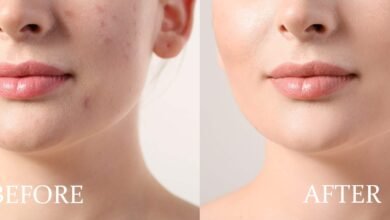
First of all,
In a time where digital connectedness rules, the idea of becoming digital has become popular as a possible treatment for anxiety. This article explores the complex relationship between anxiety and our digital lifestyles, looking at how constant connectivity exacerbates symptoms, the potential benefits of a digital detox, and the role of meditation in promoting mental health when cutting back on technology.
Constant Connectivity exacerbates the following symptoms:
Information Overload:
Information overload, a condition associated with increased anxiety, is a result of the continuous barrage of information coming from digital devices. People are overloaded with notifications, social media updates, and news, which causes cognitive overload and makes it difficult for them to completely detach from the demands of the digital world.
Improved Presence and Mindfulness:
Cutting off from electronic distractions creates a space that is favorable to mindfulness. Taking part in activities that don’t require people to constantly check their notifications promotes mindfulness and quiets the mind, which in turn helps people feel less anxious.
Social Comparison and FOMO:
The fear of missing out (FOMO) and social comparison frequently find a home on social media platforms. Because online content is carefully chosen, people may compare their life to perfect portrayals, which can make them feel inadequate and alone. This can lead to worry.
24/7 Accessibility:
The lines between work and personal life are becoming increasingly hazy due to the widespread use of cellphones and continuous connectivity. This constant availability can exacerbate anxiety symptoms by causing burnout, elevated stress levels, and a constant state of attention.
Treatment Consequences of Digital Detoxification:
Decreased Screen Time:
As part of a digital detox, people intentionally cut back on their screen time to help them disconnect from the never-ending stream of information. By placing boundaries on how much time they spend on their devices, people make time for mental relaxation and lessen the cognitive strain that comes with extended screen time.
Better Sleep Hygiene:
Blue light from digital gadgets can interfere with the creation of melatonin, which throws off sleep cycles. Putting into practice a digital detox, particularly before bed, promotes better sleep hygiene. Enhanced sleep quality subsequently leads to decreased symptoms of anxiety and improved mental health in general.
Meditation’s Place in Digital Detox:
Practices of Mindfulness Meditation:
During a digital detox, mindfulness meditation is essential because it gives people the skills they need to live in the present without being distracted by their gadgets. Mindfulness-based practices, like body scan meditations, mindful walking, and mindful breathing, assist people in developing awareness and present while reducing cognitive patterns that cause anxiety.
Retreats for Meditation Without Technology:
Attending meditation retreats without technology gives participants a special place to focus on developing their practice. Participants can completely participate in meditation without the disruptions and triggers that come with digital connectivity when they are immersed in a tech-free atmosphere.
Application of Digital Detox and Meditation in Practice:
Setting Boundaries:
One doable way to put a digital detox into practice is to set explicit limits on the use of devices. Establishing boundaries for acceptable times or locations for gadget use promotes a positive connection with technology and offers chances for mindfulness and meditation.
Programs for a Guided Digital Detox:
These programs provide systematic methods for unplugging and frequently include meditation exercises. These programs combine mindfulness practices for anxiety reduction with the support and direction people need to overcome the difficulties of cutting off from digital gadgets.
Establishing Tech-Free Zones:
Setting aside specific locations, like dining rooms or bedrooms, for electronics improves the results of a digital detox. These areas turn become havens for unwinding, introspection, and social connections, encouraging a deliberate and balanced approach to technology use.
Scheduled Meditation Breaks:
During a digital detox, scheduling meditation breaks within your day provides a thoughtful break. These quick mental resets, which can be achieved through guided meditations or brief mindfulness activities, provide people a better way to handle stress and anxiety.
In summary:
Anxiety and continuous digital connectivity are related, and this is a major issue in modern life. A comprehensive strategy for managing anxiety in the digital era is presented by accepting the idea of a digital detox and using meditation techniques. People can build resilience and mental health in the face of the challenges presented by the constantly changing digital landscape by learning to find a balance between intentional moments of separation and their digital life.



